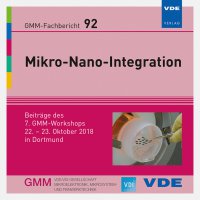Low power miniaturized tunnel magnetoresistive (TMR) sensors for Industry 4.0 applications
Conference: Mikro-Nano-Integration - 7. GMM-Workshop
10/22/2018 - 10/23/2018 at Dortmund, Deutschland
Proceedings: Mikro-Nano-Integration
Pages: 6Language: englishTyp: PDF
Personal VDE Members are entitled to a 10% discount on this title
Authors:
Slatter, Rolf (Sensitec GmbH, Lahnau, Germany)
Abstract:
Sensors based on the tunnel magnetoresistive (TMR) effect are used to convert changes in a magnetic field, that are indicators for magnetic, electrical or mechanical parameters, into electric signals that can be processed with conventional signal processing electronics. In their simplest form TMR sensors comprise two ferromagnets separated by a thin isolating layer. If the isolating layer is very thin (just a few nanometers) then electrons can “tunnel” though the isolating layer. Based on this quantum physical effect the new generation of magnetoresistive sensors has a power consumption up to 1000 times lower than conventional magnetic sensors, for example those based on the Hall effect. TMR sensors are therefore ideally suited to applications where a low power consumption is a pre-requisite, for example in battery powered applications or for sensors powered via energy harvesting. This is particularly important for Industry 4.0, which is leading to an increased number of sensors to be applied in industrial equipment for condition monitoring and improved process control. The high power consumption of conventional sensors means that the higher functionality and higher availability of the machines, enabled by additional sensors, is counter-balanced by a significant increase in power consumption. TMR sensors open an opportunity to break this “gordian knot”.


